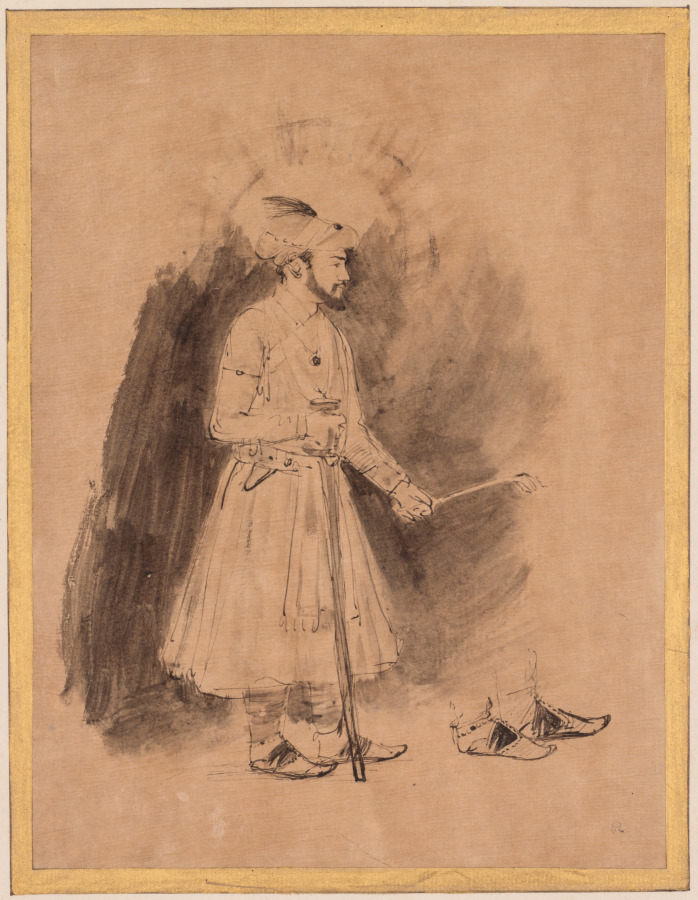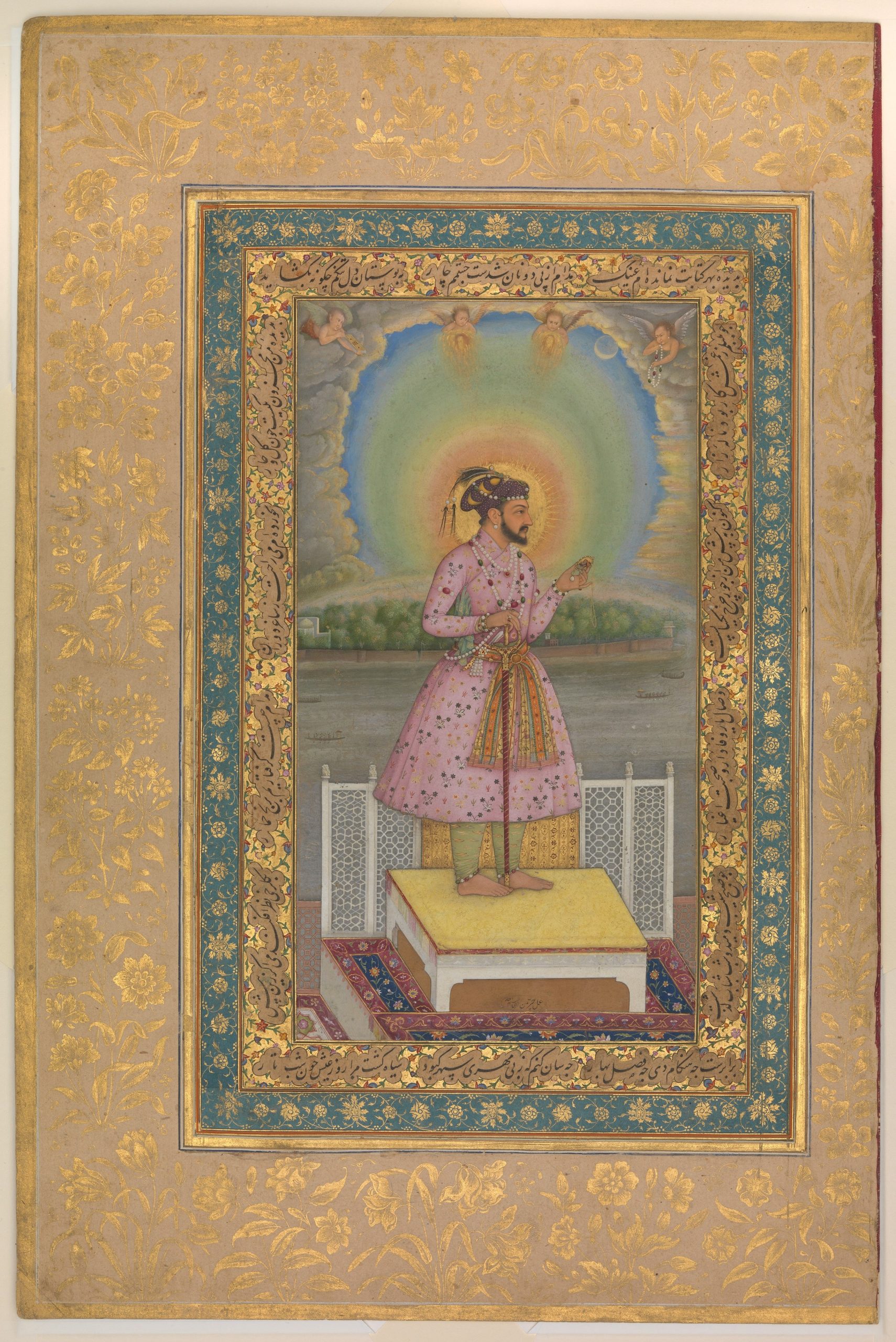Mughal Paintings: A Cross-Faith Encounter
In today’s India, where Hindutva politics has recast the Mughal past as a symbol of tyranny and decline, it’s worth remembering that the Mughals once practiced a remarkable degree of religious tolerance—at a time when much of Europe was torn apart by wars of religion. Nowhere is this spirit of cross-faith encounter more vividly expressed than in Mughal miniature painting.
Take, for example, this portrait of Emperor Shah Jahan, currently on display at The Metropolitan Museum of Art. Painted by Chitarman, a Hindu artist in the imperial atelier, it reflects both Persian and Central Asian influences characteristic of the Mughal style. The painting is framed with Persian calligraphy—verses by an Afghan poet—whose melancholy tone speaks not of Shah Jahan himself, but of a refined imperial connoisseurship that transcended sectarian boundaries.
Interestingly, Hinduism and Islam were not the only traditions that shaped Mughal art. The soft halo of gold and green encircling the emperor’s head nods to Christian iconography, inspired by the Mughal court’s engagement with Jesuit missionaries. In turn, European artists were equally captivated by Mughal visual culture—Rembrandt, for instance, created his own drawing of Shah Jahan now housed at the Cleveland Museum of Art.

At a time when history is being rewritten through divisive lenses, revisiting such artworks reminds us that cultural exchange—not exclusion—has always been central to the subcontinent’s artistic and intellectual life.
See more on this painting by Chitarman in this NYT article: https://www.nytimes.com/interactive/2021/04/02/arts/design/shah-jahan-chitarman.html
